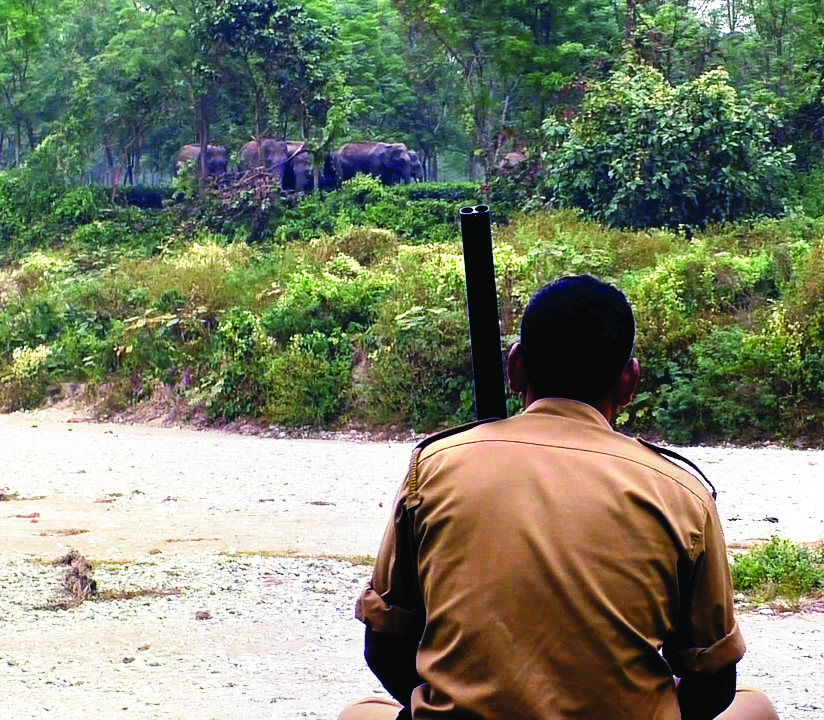To monitor wildlife, Gorumara Wildlife Div makes use of hi-tech equipment

Jalpaiguri: The Gorumara Wildlife Division is putting into service cutting-edge technology, including drone cameras, night vision cameras and thermal cameras, to monitor wild animal movement, especially those venturing into human habitats, including tea gardens.
Forest officials cite the challenge of identifying wildlife in areas near tea plantations or forests during nighttime as the primary requirement for adopting these measures. The anticipated outcome is a substantial reduction in conflicts between wildlife and humans.
Following successful mock drills at the Mogalkata Tea Plantation, showcasing various modern devices, the forest workers of Binnaguri Wildlife Squad in the Gorumara Wildlife Division have now received and commenced operations with the newly-acquired equipment.
A recent incident at Mogulkata Tea Garden, where a leopard entered, killed a calf, consumed it and then escaped, triggered panic among the workers. The Forest department installed a cage in the garden but could not trap the leopard. Workers claimed that they felt the strong presence of leopards, prompting the Binnaguri Wildlife Squad to deploy modern technology in an effort to locate them.
Dhrubajyoti Biswas, the Range Officer of Binnaguri Wildlife Squad, stated: “Drones were flown to inspect the bushes around the garden, but no leopards were found. Previously, the work involved considerable risks, but now, thanks to drones, the task has become much easier.”
Sajal Kumar Dey, Range Officer of Khunia Wildlife Squad, highlighted the convenience of using drones equipped with night vision cameras and thermal cameras during nighttime searches in tea gardens. The Forest department plans to provide modern tranquilising shotguns along with other equipment, enhancing the safety and efficiency of the workers.
While some equipment has already arrived, additional deliveries are expected soon. Every squad in the Gorumara Wildlife Division, including Binnaguri, Ramshai and Khunia, will be equipped with this modern technology. The Forest department anticipates that this advanced technology will not only streamline their operations but also reduce conflicts between wildlife and humans.



